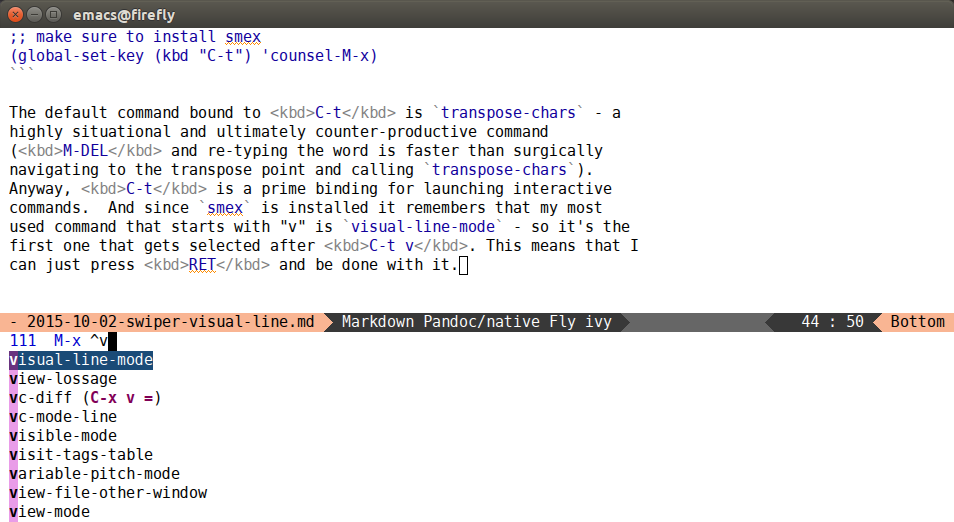Swiper and visual-line-mode
02 Oct 2015In case you encounter files with very long lines, the built-in
M-x visual-line-mode might come in handy. Although 1MB
long one-line files are a disaster for Emacs, there's no problem
handling smaller files with long lines that result from bad markdown
renderers (notably Github). They way visual-line-mode works, is it
inserts virtual newlines in appropriate positions, so that no line is
truncated. The advantage is that these newlines aren't written to the
file when the buffer is saved (otherwise, a simple M-q
(fill-paragraph) would work too).
Today I've added visual-line-mode support to
swiper, so handling these files
should be even easier now. The change was surprisingly simple: just
two checks for visual-line-mode variable and these basic
replacements:
forward-line->line-move,line-beginning-position->beginning-of-visual-line,line-end-position->end-of-visual-line.
By the way, visual-line-mode is one of the small number of commands
that I call by name instead of by key chord. But thanks to
counsel-M-x and smex calling this command by name is as short as
C-t v RET. To explain a bit more, here's my setup:
;; make sure to install smex
(global-set-key (kbd "C-t") 'counsel-M-x)
The default command bound to C-t is transpose-chars - a
highly situational and ultimately counter-productive command
(M-DEL and re-typing the word is faster than surgically
navigating to the transpose point and calling transpose-chars, plus
it trains the hands to type the word correctly next time). Anyway,
C-t is a prime binding for launching interactive commands.
And since smex is installed it remembers that my most used command
that starts with "v" is visual-line-mode - so it's the first one
that gets selected after C-t v. This means that I can just
press RET and be done with it.

Finally, related to visual-line-mode, here's a command I use to
negate M-q (fill-paragraph) (source):
(global-set-key (kbd "C-M-q") 'ora-unfill-paragraph)
(defun ora-unfill-paragraph ()
"Transform a paragraph into a single line."
(interactive)
(let ((fill-column (point-max)))
(fill-paragraph nil t)))
Thanks to @joostkremers for the suggestion in #227.
